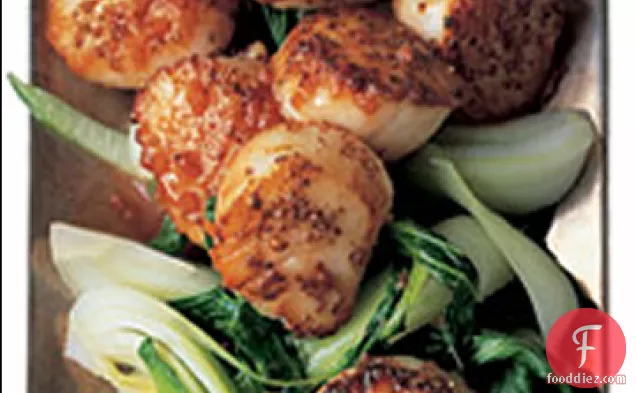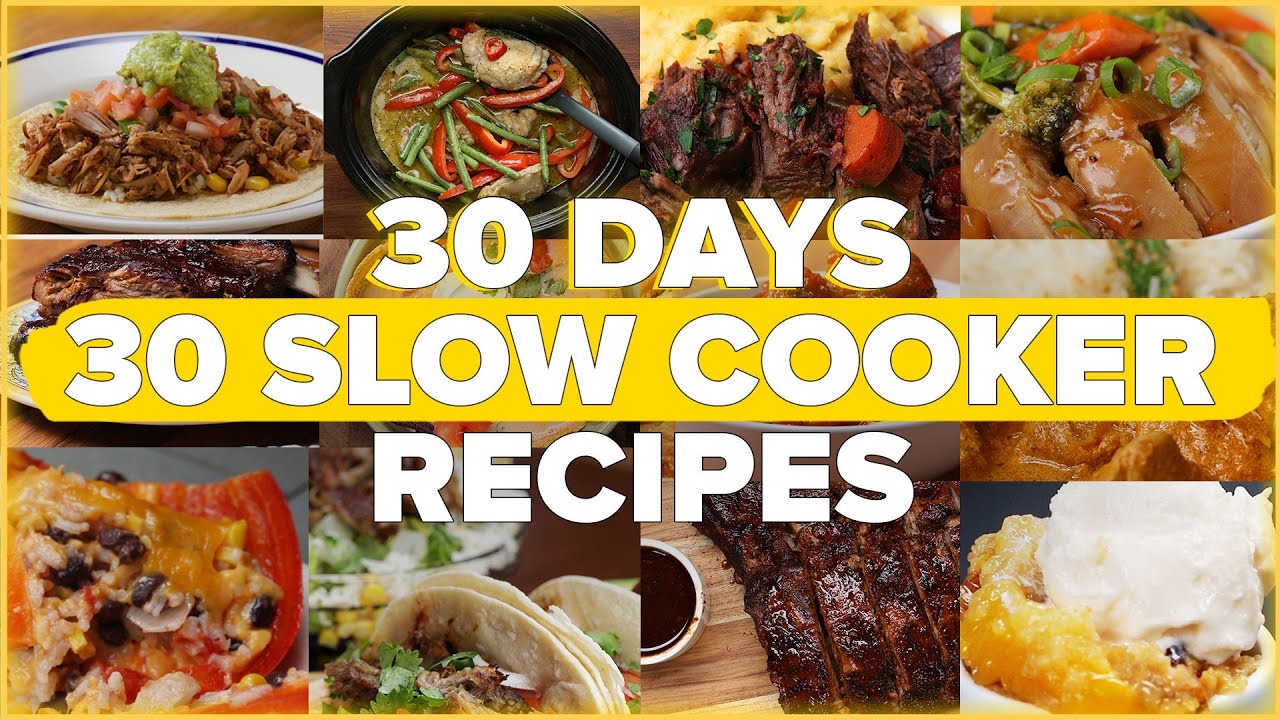Seared Coriander Scallops with Bok Choy and Hoisin

Seared Coriander Scallops with Bok Choy and Hoisin is a gluten free and dairy free recipe with 2 servings. This recipe covers 12% of your daily requirements of vitamins and minerals. One serving contains 136 calories, 3g of protein, and 5g of fat. Head to the store and pick up baby bok choy, hoisin sauce, water, and a few other things to make it today. From preparation to the plate, this recipe takes about 45 minutes.
Instructions
1
Whisk orange juice, hoisin sauce, and ginger in small bowl. Pat scallops dry on paper towels.
Ingredients you will need![Hoisin Sauce]() Hoisin Sauce
Hoisin Sauce![Orange Juice]() Orange Juice
Orange Juice![Scallops]() Scallops
Scallops![Ginger]() Ginger
Ginger
Equipment you will use![Paper Towels]() Paper Towels
Paper Towels![Whisk]() Whisk
Whisk![Bowl]() Bowl
Bowl
2
Sprinkle coriander seeds over top of scallops, pressing to adhere.
Ingredients you will need![Whole Coriander Seeds]() Whole Coriander Seeds
Whole Coriander Seeds![Scallops]() Scallops
Scallops
3
Heat sesame oil in large nonstick skillet over high heat.
Ingredients you will need![Sesame Oil]() Sesame Oil
Sesame Oil
Equipment you will use![Frying Pan]() Frying Pan
Frying Pan
4
Add scallops, coriander side down, and cook just until opaque in center, turning once, about 1 1/2 minutes per side.
Ingredients you will need![Coriander]() Coriander
Coriander![Scallops]() Scallops
Scallops
6
Add bok choy and 2 tablespoons water to skillet; sauté until wilted, about 2 minutes. Using tongs, divide bok choy between 2 plates, then top with scallops.
Ingredients you will need![Bok Choy]() Bok Choy
Bok Choy![Scallops]() Scallops
Scallops![Water]() Water
Water
Equipment you will use![Frying Pan]() Frying Pan
Frying Pan![Tongs]() Tongs
Tongs
7
Add hoisin mixture to same skillet; boil until reduced to 1/3 cup, about 2 minutes.
Ingredients you will need![Hoisin Sauce]() Hoisin Sauce
Hoisin Sauce
Equipment you will use![Frying Pan]() Frying Pan
Frying Pan
9
*Hoisin sauce, a thick mixture of ground soybeans, garlic, chiles, and spices, is used as a condiment and ingredient in Chinese cooking. It can be found in the Asian foods section of many supermarkets and at Asian markets.
Ingredients you will need![Hoisin Sauce]() Hoisin Sauce
Hoisin Sauce![Condiment]() Condiment
Condiment![Soybeans]() Soybeans
Soybeans![Chili Pepper]() Chili Pepper
Chili Pepper![Garlic]() Garlic
Garlic![Spices]() Spices
Spices
Ingredients
Recommended wine: Chardonnay, Chenin Blanc, Pinot Noir
Scallops works really well with Chardonnay, Chenin Blanc, and Pinot Noir. Chardonnay and chenin blanc are great matches for grilled or seared scallops. If your scallops are being matched with bacon or other cured meats, try a lightly chilled pinot noir. The Tyler Winery Santa Barbara County Chardonnay with a 4.1 out of 5 star rating seems like a good match. It costs about 30 dollars per bottle.

Tyler Winery Santa Barbara County Chardonnay
2015 brought the earliest vintage of the decade so far. After the large 2013 and 2014 vintages and the continued drought, the vines put forth a fraction of the fruit than the previous two years. They were down approximately 30% overall but the result was exceptional quality and deep, powerful wines with great acidity. Citrus, anise, saline, and energetic.DifficultyHard
Ready In45 m.
Servings2
Health Score21
Related recipes
Cherry-Apple Lattice Pie
Garlicky Green Beans
Turkey with Country Ham Stuffing
Striped Tuile Rolls
Magazine

Your Inner Chef with Taylor Swift's Top 3 Recipes from Her Beloved NYC Hangout

20 Mouthwatering Recipes You Need to Try Today!

Master the Art of Making Perfect Pancakes with This Foolproof Recipe

The Science Behind Red Wine: Its Surprising Health Benefits and Potential Risks

12 Wine Cocktails for a Sophisticated Twist

Sip, Swirl, and Celebrate: Toasting to National Wine Day on May 25th

National Drink Wine Day on February 18

Celebrating Souffle Day with Delectable Delights

Indulge in the Delightful Flavor of Oyster Soup on Its Special Day!

Celebrating World Nutella Day

Vibrant World of South Asian Food Trucks at the Mississauga Festival

Celebrating Costa Rica Independence Day with an Authentic Culinary Experience

Grab the Best Deals on Food Gifts: Black Friday and Cyber Monday Specials

The Black Food Festival: A Culinary Adventure Like No Other

The Rich and Flavorful Black Food Traditions in Netflix's 'High on the Hog'

10 Slow Cooker Recipes to Keep You Warm and Cozy in January

10 Delicious and Refreshing Cocktail Recipes for January!

Stay Cozy and Warm with These Delicious Winter Recipes

Rainbow Food by Colors for a Nutrient-Rich and Vibrant Diet

The Future of Nutritionthe New and Improved Food Pyramid

Your Inner Chef with Taylor Swift's Top 3 Recipes from Her Beloved NYC Hangout

20 Mouthwatering Recipes You Need to Try Today!

Sip, Swirl, and Celebrate: Toasting to National Wine Day on May 25th

National Drink Wine Day on February 18

Indulge in the Delightful Flavor of Oyster Soup on Its Special Day!

These Super Recipes for Your Football Party!

The Secrets Behind 3 Classic Comfort Food Recipes

Recipes to Spice Up Your February Menu

Top 20+ Must-Try Recipes Dominating February 2024













